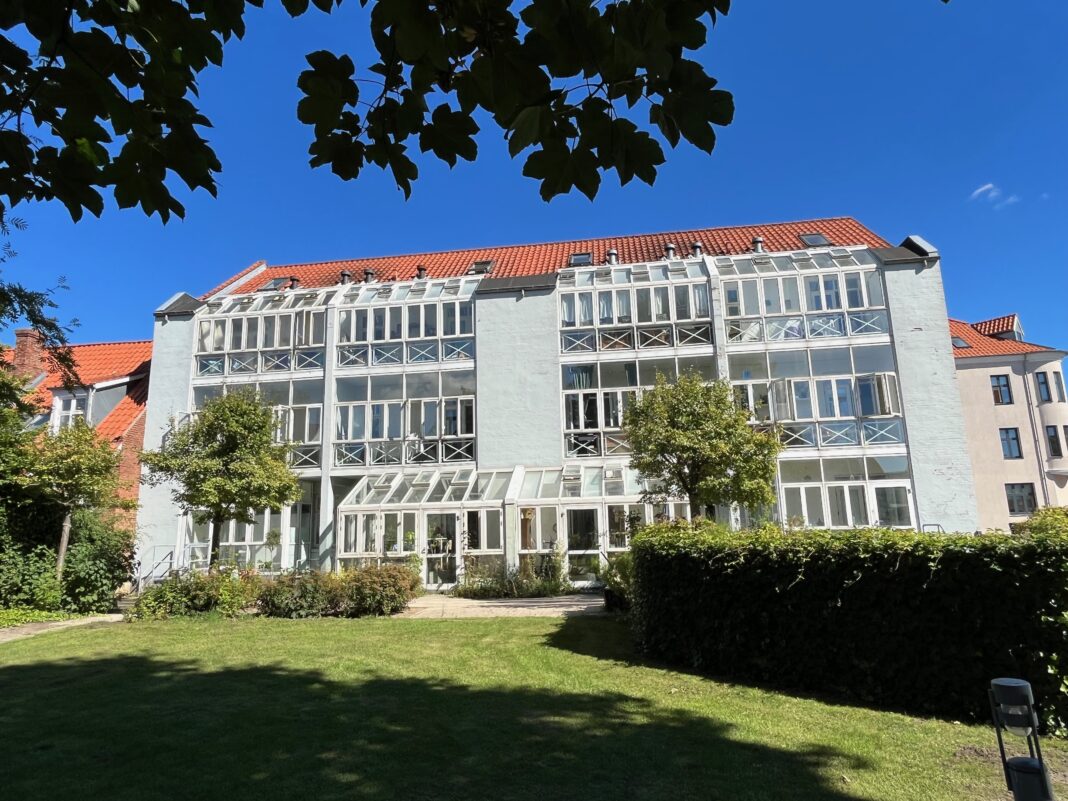RINNO is pleased to announce that renovation work on the project’s Danish pilot site in Slagelse is now in full swing. This retrofit is made possible thanks to a collaborative effort between RINNO and the Fællesorganisationen af Boligorganisationer (FOB) in Slagelse to promote sustainable and innovative building renovations, improve the energy efficiency of buildings, and create comfortable and healthy living spaces. Not only are these renovations now underway in Denmark, but stakeholders can also view the pilot site’s planned building model using VR at RINNO’s Irish partner, Dublin City University.
The project’s Danish pilot site represents one of four buildings that have been chosen for deep renovation work and is located in the project’s northernmost climate zone. The site features a variety of building renovation measures ranging from façade, ventilation, and insulation upgrades to the use of building information modelling (BIM) to create virtual representations of planned renovations. Not only can this BIM be used throughout the renovation lifecycle to garner feedback on progress and living conditions, but stakeholders can now also experience the building in a virtual reality environment.

What is BIM and how is it used in renovation and construction?
RINNO has developed a prototype that pulls data from building sensors into a central model that can be used to provide meaningful and actionable advice to owners, managers and building occupants. Sensors are used to detect building characteristics like air quality and lighting levels and feed these back to the building information model (BIM) which can then be imported into a virtual environment. This virtual representation of the building can then be viewed by tenants and other stakeholders who can provide feedback and recommendations for optimising energy efficiency and overall occupant comfort.
While operational energy calculations are currently well-supported by BIM technologies and data libraries, this is not the case with embodied energy data. In this case, very little data is currently available to support early-stage design decisions. RINNO addresses this with a BIM tool that informs designers about the impact of their decisions on carbon emissions throughout the building life-cycle.
How can BIM benefit from VR tech?
Virtual Reality (VR) technology has become increasingly popular in the field of building renovation. This is because VR offers architects, engineers, and designers the ability to create a virtual representation of a building, allowing them to visualise and test various renovation plans before implementing them in the physical space. Overall, VR technology can greatly benefit building renovation by providing a more efficient and effective way to design, plan, and execute projects.
One of the most exciting aspects of this pilot site is the use of VR technology to view the BIM model. Currently located at Dublin City University’s Colm Delves Leadership Lab, stakeholders can put on a VR headset and explore the Danish virtual building model in an immersive way. This technology allows us to see the pilot building from a 360° perspective and even simulate walking through the renovation space. The below video offers a first, virtual look at the pilot site, but it is best explored in the virtual space hosted by our Irish academic partners!
RINNO is a Horizon 2020 project that aims to considerably accelerate the rate of deep renovation in the EU by reducing the time, efforts, and costs involved. We strive to deliver a set of efficient, environmentally friendly, multi-functional, and easily applicable construction-related innovations that are geared in favour of a more sustainable future in the Irish economy.


 This project has received funding from the European Union's Horizon 2020 research and innovation programme under grant agreement No 892071.
This project has received funding from the European Union's Horizon 2020 research and innovation programme under grant agreement No 892071.